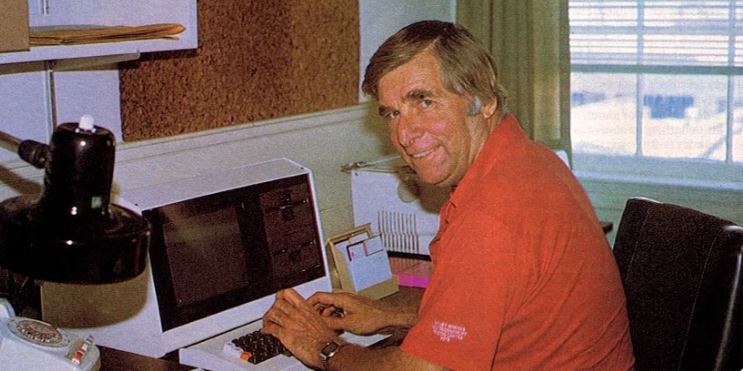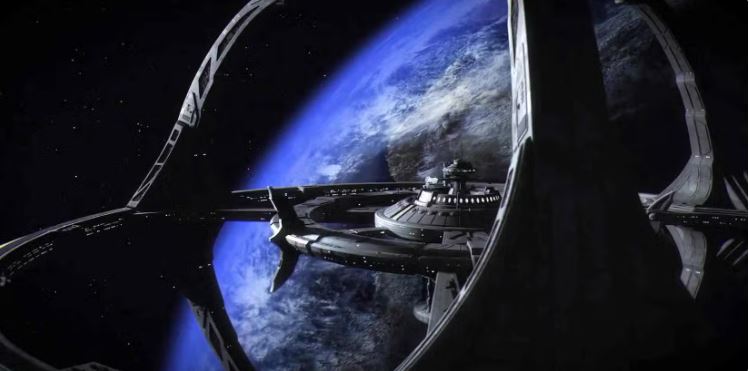Star Trek: Lower Decks has perfected the art of deep cuts and callbacks to previous Star Trek series and movies in the four seasons the show has had thus far. In the premiere of the fifth and final season, “Dos Cerritos,” the writers demonstrated their proficiency at the art of deep cuts again, throwing in a simple one-liner that was actually a dig at the franchise’s creator, Gene Roddenberry.
“Dos Cerritos” involves a classic Star Trek trope: crossing over to an alternate timeline and meeting alternate versions of the main characters. Nearly every Star Trek series has at least one episode based on this trope. When the U.S.S. Cerritos encounters their alternate universe counterparts, they discover that alternate Mariner, who goes by Becky Freeman, is the captain of the alternate Cerritos.
Each character pairs up with the alternate version of themselves to resolve the space-time breach, and it does not go well for anyone (except the Boimlers, who get along famously). After the crews have been working together for a while, tensions explode into open conflict. As Captain Becky Freeman and Mariner enter a cargo bay where dozens of crew members are yelling at or physically fighting their alternates, Freeman yells:
There’s no interpersonal conflict allowed on my ship!
It seems like a throw-away line that fits the character well, given that the episode has already established that Captain Becky Freeman runs her ship with fear and an iron fist. But hardcore fans will recognize this as a jibe at one of Roddenberry’s Rules for the Star Trek universe.
Roddenberry’s Rules for ‘Star Trek’

Star Trek’s creator had a clear idea of what he wanted the show’s universe to look like, and he communicated this vision to everyone who worked on the pilot and first season of Star Trek: The Original Series (TOS) right from the beginning. In The Fifty-Year Mission: The Complete, Uncensored, Unauthorized Oral History of Star Trek: The First 25 Years, several writers who worked on TOS outlined the strict rules Roddenberry laid down about what was and wasn’t allowed in his Star Trek universe.
One of the rules Roddenberry was particularly adamant about was “no interpersonal conflict” on the Enterprise. The Star Trek creator believed that, in the future, humankind would be so philosophically evolved there wouldn’t be conflict, ever. He acknowledged that all good stories need conflict, but the conflict in each episode needed to come from an external source, usually an alien species that was less evolved than his idealistic vision of humankind.
To say Roddenberry took a hands-on approach to enforcing his rules for the Star Trek universe would be a gross understatement. Several writers who worked on TOS confirmed that Roddenberry insisted on approving every script. When he didn’t like a script, he would demand last-minute rewrites, or, in a few cases, assign a rewrite to a different writer without informing the original writer.
The No Conflict Rule Created Behind-the-Scenes Conflict

It would be an understatement to say that the “no interpersonal conflict” rule created conflict in the writer’s room. Understandably, the writers who had their scripts rewritten without their consent were livid. Roddenberry was often evasive or unapologetic when confronted about rewrites. Allegedly, some of the show’s original writers quit because of Roddenberry’s approach to rewrites, which eventually got him called out.
When Roddenberry demanded rewrites to the original teleplay for “The City on the Edge of Forever,” which was written by Harlan Ellison, one of the most respected sci-fi authors of the time, Ellison was furious. He publicly denounced the episode, telling the world that what they saw on the screen wasn’t what he’d written for the show. He later demanded that he not be credited as the sole writer on the episode.
The “no interpersonal conflict” rule created additional tension because the writers felt stifled by both the rule and how strictly Roddenberry enforced it. No matter how many times the TOS writers told Roddenberry that the show would be more interesting and believable if there was tension between the crew members, Roddenberry refused to budge. As a result, the writers had a difficult time coming up with enough story ideas to fill a season’s worth of episodes. It’s hard to tell a story about humans without addressing the squabbles that arise from interacting with other humans.
How ‘Star Trek’ Has Evolved

Fans who’ve watched any Star Trek beyond TOS know that, eventually, the franchise abandoned Roddenberry’s interpersonal conflict rule. This began after the commercial failure of Star Trek: The Motion Picture, when Paramount decided to kick Roddenberry out of the creative process for future Star Trek projects.
When discussions about Star Trek: The Next Generation (TNG) began, Roddenberry demanded to be included, and Paramount agreed. Unfortunately, he went straight back to his repressive control of the writer’s room, and the first two seasons of TNG suffered. By the time the creative team started working on the third season, Roddenberry was in his 60s, and stepped away from the project to tend to his health. With the creative team free from Roddenberry’s tight control, the story lines in TNG changed dramatically. Roddenberry could no longer push back on the changes to his vision, and so the franchise began to drift away from Roddenberry’s rules.
TNG maintained Roddenberry’s vision of an idealized future free from war, where humans relied on their intellect, diplomacy, and high-minded values to maintain peaceful relations with other cultures. However, it also acknowledged that even the most philosophically evolved humans still have emotions and fight with each other. The tension between the members of the bridge crew added a depth and relatability to the Star Trek universe that TOS never had.
The franchise completely abandoned Roddenberry’s vision of a conflict-free, utopian future with Star Trek: Deep Space Nine (DS9). The show was set in Bajoran space, which had just been liberated from decades of violent occupation by the Cardassians. The station’s second-in-command was a former freedom fighter, who participated in acts of (arguably necessary) terrorism. Commander Benjamin Sisko was an outspoken black man who wasn’t afraid to fight with his words or his fists. The bridge crew openly argued about how to handle everything from day to day operations to crisis situations.
Many Trekkies rejected DS9 when it premiered, correctly pointing out that it didn’t adhere to Roddenberry’s vision for Star Trek. Others, though, embraced the gritty, complex version of the Star Trek universe. Today, DS9 is widely considered one of the best series in the franchise. And since DS9, the Trekverse has embraced plot points and story lines that center on conflicts among crew members. For the most part, that decision has made the franchise better.
Though Roddenberry’s hope that humankind would move past petty conflicts in a post-scarcity world is a nice idea, it didn’t take into account the fact humans will always be ego-driven creatures and will inevitably clash. Believing that an entire crew of people who live together and work together 24/7 never even bicker is a stretch at best, and at worst, painfully naive. The decision to leave Roddenberry’s rule behind and embrace interpersonal conflict, while still maintaining Roddenberry’s optimistic vision of a better future, gave the writers the freedom to create a sci-fi world that people could see themselves living in one day. That’s one of the many reasons Star Trek endures more than 50 years later.
